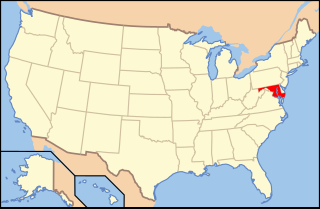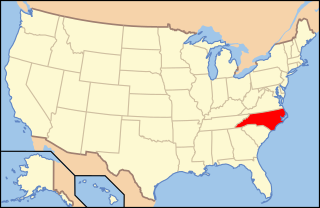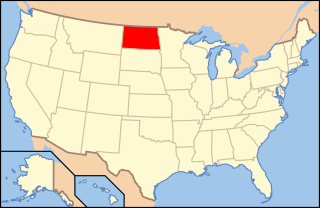Related Research Articles

The Second Amendment to the United States Constitution protects the right to keep and bear arms. It was ratified on December 15, 1791, along with nine other articles of the Bill of Rights. In District of Columbia v. Heller (2008), the Supreme Court affirmed for the first time that the right belongs to individuals, for self-defense in the home, while also including, as dicta, that the right is not unlimited and does not preclude the existence of certain long-standing prohibitions such as those forbidding "the possession of firearms by felons and the mentally ill" or restrictions on "the carrying of dangerous and unusual weapons". In McDonald v. City of Chicago (2010) the Supreme Court ruled that state and local governments are limited to the same extent as the federal government from infringing upon this right. New York State Rifle & Pistol Association, Inc. v. Bruen (2022) assured the right to carry weapons in public spaces with reasonable exceptions.
The Sullivan Act was a gun control law in New York state that took effect in 1911. The NY state law requires licenses for New Yorkers to possess firearms small enough to be concealed. Private possession of such firearms without a license was a misdemeanor, and carrying them in public is a felony. The law was the subject of controversy regarding both its selective enforcement and the licensing bribery schemes it enabled. The act was named for its primary legislative sponsor, state senator Timothy Sullivan, a Tammany Hall Democrat.
United States v. Cruikshank, 92 U.S. 542 (1876), was a landmark decision of the United States Supreme Court ruling that the U.S. Bill of Rights did not limit the power of private actors or state governments despite the adoption of the Fourteenth Amendment. It reversed the federal criminal convictions for the civil rights violations committed in aid of anti-Reconstruction murders. Decided during the Reconstruction Era, the case represented a major defeat for federal efforts to protect the civil rights of African Americans.

Gun politics is defined in the United States by two primary opposing ideologies concerning the private ownership of firearms. Those who advocate for gun control support increasingly restrictive regulation of gun ownership; those who advocate for gun rights oppose increased restriction, or support the liberalization of gun ownership. These groups typically disagree on the interpretation of the text, history and tradition of the laws and judicial opinions concerning gun ownership in the United States and the meaning of the Second Amendment to the Constitution of the United States. American gun politics involves these groups' further disagreement concerning the role of firearms in public safety, the studied effects of ownership of firearms on public health and safety, and the role of guns in national and state crime.

In the United States, open carry refers to the practice of visibly carrying a firearm in public places, as distinguished from concealed carry, where firearms cannot be seen by the casual observer. To "carry" in this context indicates that the firearm is kept readily accessible on the person, within a holster or attached to a sling. Carrying a firearm directly in the hands, particularly in a firing position or combat stance, is known as "brandishing" and may constitute a serious crime, but is not the mode of "carrying" discussed in this article.
In the United States, the right to keep and bear arms is modulated by a variety of state and federal statutes. These laws generally regulate the manufacture, trade, possession, transfer, record keeping, transport, and destruction of firearms, ammunition, and firearms accessories. They are enforced by state, local and the federal agencies which include the Bureau of Alcohol, Tobacco, Firearms and Explosives (ATF).
District of Columbia v. Heller, 554 U.S. 570 (2008), is a landmark decision of the Supreme Court of the United States. It ruled that the Second Amendment to the U.S. Constitution protects an individual's right to keep and bear arms—unconnected with service in a militia—for traditionally lawful purposes such as self-defense within the home, and that the District of Columbia's handgun ban and requirement that lawfully owned rifles and shotguns be kept "unloaded and disassembled or bound by a trigger lock" violated this guarantee. It also stated that the right to bear arms is not unlimited and that certain restrictions on guns and gun ownership were permissible. It was the first Supreme Court case to decide whether the Second Amendment protects an individual right to keep and bear arms for self-defense or whether the right was only intended for state militias.
Presser v. Illinois, 116 U.S. 252 (1886), was a landmark decision of the Supreme Court of the United States that held, "Unless restrained by their own constitutions, state legislatures may enact statutes to control and regulate all organizations, drilling, and parading of military bodies and associations except those which are authorized by the militia laws of the United States." It states that the Second Amendment to the United States Constitution limited only the power of Congress and the national government to control firearms, not that of the states, and that the right to peaceably assemble in the First Amendment to the United States Constitution was not protected by the clause referred to except to petition the government for a redress of grievances. This decision was overruled in McDonald v. City of Chicago in (2010).

Gun laws in Florida regulate the sale, possession, and use of firearms and ammunition in the state of Florida in the United States.

Gun laws in Colorado regulate the sale, possession, and use of firearms and ammunition in the state of Colorado in the United States.

Gun laws in Georgia regulate the sale, possession, and use of firearms and ammunition in the state of Georgia in the United States.

Gun laws in Iowa regulate the sale, possession, and use of firearms and ammunition in the state of Iowa in the United States.

Gun laws in Maryland regulate the sale, possession, and use of firearms and ammunition in the U.S. state of Maryland.

Gun laws in North Carolina regulate the sale, possession, and use of firearms and ammunition in the U.S. state of North Carolina.

Gun laws in North Dakota regulate the sale, possession, and use of firearms and ammunition in the state of North Dakota in the United States.
In the United States, the right to keep and bear arms is a fundamental right protected by the Second Amendment to the United States Constitution, part of the Bill of Rights, and by the constitutions of most U.S. states. The Second Amendment declares:
A well regulated Militia, being necessary to the security of a free State, the right of the people to keep and bear Arms, shall not be infringed.
State v. Buzzard is an 1842 case determined by the Supreme Court of Arkansas in which the defendant Buzzard was charged with violating an Arkansas State law that prohibited the carrying of concealed weapons. He claimed that this law infringed upon his Constitutional right to keep and bear arms enumerated in the Second Amendment. Arkansas Trial Court struck down the state law so the state appealed to the Arkansas Supreme Court. A majority held that the sole intent of the Second Amendment was for the States to have a militia to protect themselves against a national army that could infiltrate and overthrow them. In its view because of this original intent it was never meant to apply as a right granted to individuals.

The history of concealed carry in the United States is the history of public opinion, policy, and law regarding the practice of carrying concealed firearms, especially handguns.
New York State Rifle & Pistol Association, Inc. v. Bruen, 597 U.S. 1 (2022), abbreviated NYSRPA v. Bruen and also known as NYSRPA II or Bruen to distinguish it from the 2020 case, is a landmark decision of the United States Supreme Court related to the Second Amendment to the United States Constitution. The case concerned the constitutionality of the 1911 Sullivan Act, a New York State law requiring applicants for a pistol concealed carry license to show "proper cause", or a special need distinguishable from that of the general public, in their application.
References
- ↑ Ph.D., Gregg Lee Carter; Carter, Gregg Lee (May 31, 2012). Guns in American Society. ABC-CLIO. pp. 647–. ISBN 9780313386701 . Retrieved March 9, 2013.
- 1 2 "Scalia in Heller" . Retrieved March 25, 2013.
- ↑ Halbrook, Stephen P. (1998). Freedmen, the 14th Amendment, and the Right to Bear Arms, 1866-1876. Greenwood Publishing Group. ISBN 9780275963316 . Retrieved March 7, 2013.
- ↑ Section 1st enacts, "that it shall not be lawful for any merchant or vender of wares or merchandize in this State, or any other person or persons whatever, to sell, or to offer to sell, or to keep or to have about their persons, or elsewhere, any of the herein-after-described weapons, to wit: Bowie or any other kinds of knives, manufactured and sold for the purpose of wearing or carrying the same as arms of offence or defence; pistols, dirks, sword-canes, spears, &c., shall also be contemplated in this act, save such pistols as are known and used as horseman's pistols," &c. Nunn, 1 Ga. 243 at 246.
- ↑ Utter, Glenn H. (2000). Encyclopedia of gun control and gun rights . Oryx Press. ISBN 9781573561723 . Retrieved March 7, 2013.
- ↑ Cramer, Clayton E. (1994). For the defense of themselves and the state: the original intent and judicial interpretation of the right to keep and bear arms . Praeger. ISBN 9780275949136 . Retrieved March 7, 2013.
- ↑ Halbrook, Stephen P. (1989). A Right to Bear Arms: State and Federal Bills of Rights and Constitutional Guarantees. Greenwood Publishing Group. ISBN 9780313265396 . Retrieved March 7, 2013.
- 1 2 Nunn, 1 Ga. 243 at 251.
- ↑ Nunn, 1 Ga. 243 at 247-48.
- ↑ Nunn, 1 Ga. 243 at 248-49.
- ↑ Nunn, 1 Ga. 243 at 249.
- ↑ Doherty, Brian (2008). Gun Control on Trial: Inside the Supreme Court Battle Over the Second Amendment . Cato Institute. ISBN 9781933995250 . Retrieved March 7, 2013.
- ↑ Nunn, 1 Ga. 243 at 250.
- ↑ Ph.D., Gregg Lee Carter (May 4, 2012). Guns in American Society. ABC-CLIO. ISBN 9780313386718 . Retrieved March 19, 2013.